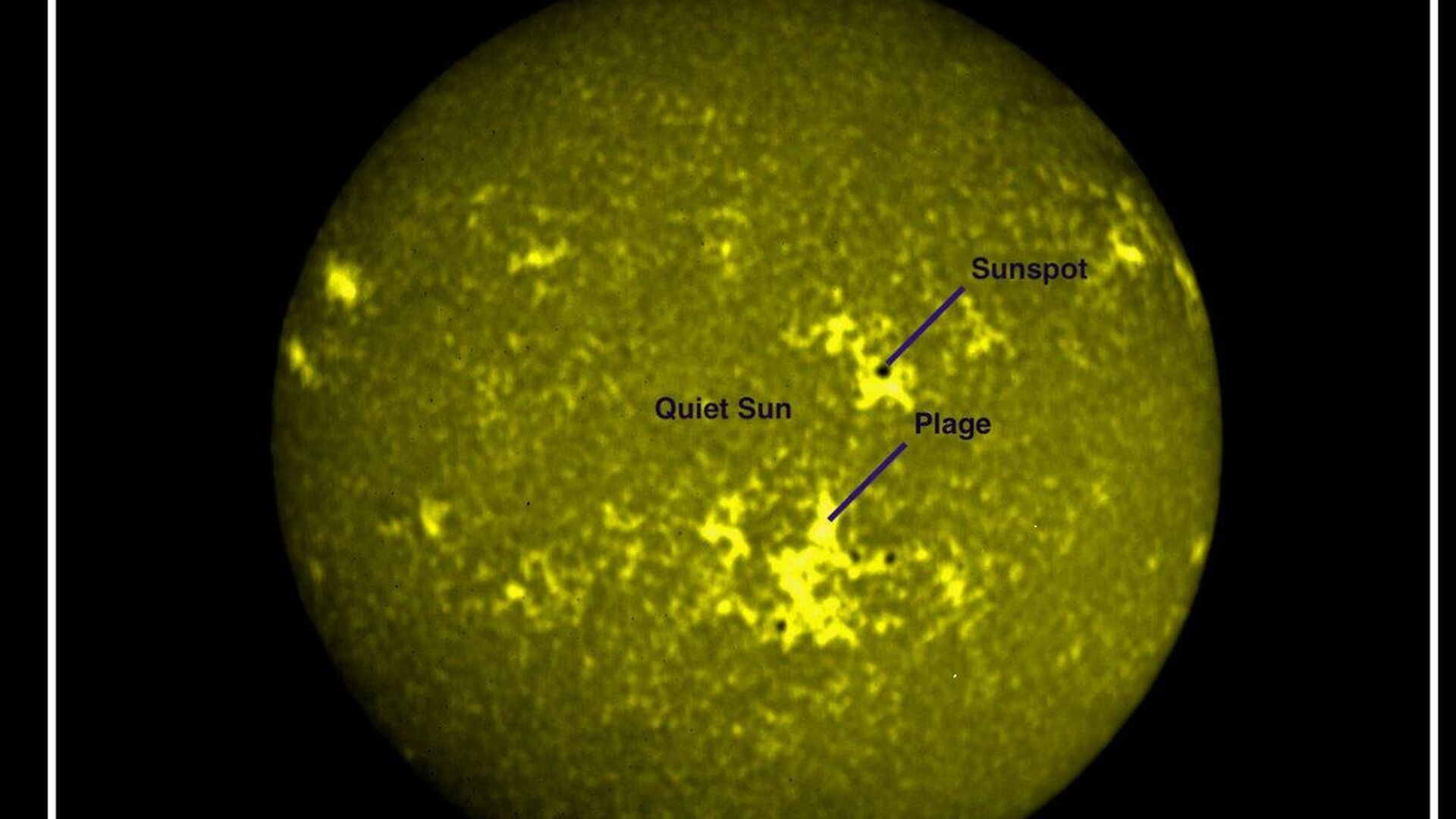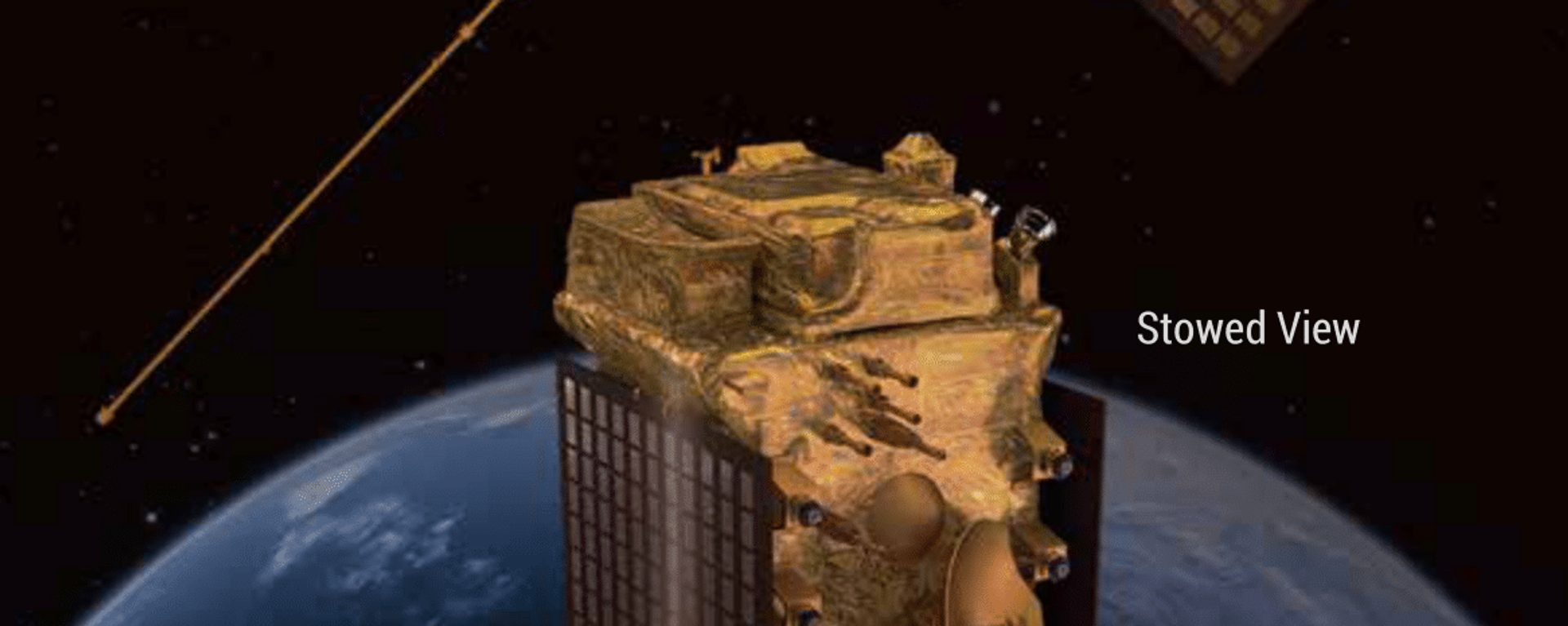https://sputniknews.in/20231225/aditya-l1s-final-stage-countdown-to-halo-insertion-kicks-off-5957584.html
Aditya L1's Final Stage: Countdown To Halo Insertion Kicks Off
Aditya L1's Final Stage: Countdown To Halo Insertion Kicks Off
Sputnik India
India's first dedicated solar space mission, Aditya L1, is all set to reach the final point of its mission (Lagrange point L1) on 6 January, from where scientists will study the upper layers, chromosphere, and corona of the Sun.
2023-12-25T17:46+0530
2023-12-25T17:46+0530
2023-12-25T17:46+0530
science & tech
science & tech
india
indian space research organisation (isro)
aditya-l1 mission
space satellite
space industry
international space station (iss)
space exploration
space rocket
https://cdn1.img.sputniknews.in/img/07e7/0c/09/5773570_0:263:1200:938_1920x0_80_0_0_c3f1462ee384d5a6f3dd44dcaee2ea81.jpg
The Aditya L1 spacecraft is set to perform a complex insertion into the halo orbit around Lagrange Point 1 (L1), according to Indian media reports on Monday. This marks the mission's final phase.The spacecraft has undergone four manoeuvres before being injected into a transfer orbit towards L1.The last phase of any space is critical and most important. That said, the Aditya L1 has now come to the final stage of reaching its mission. Experts emphasise that this stage necessitates a meticulous process that involves careful planning to ensure that the spacecraft maintains its trajectory and velocity, thus enabling a successful entry into the halo orbit.Being a point of gravitational equilibrium between the Earth and the Sun, Lagrange Point 1 is located 15 lakh kilometres away from our planet. The Indian Space Research Organisation (ISRO) launched the spacecraft on 6 September 2023, and the mission is all set to reach its destination on 6 January 2024.Once the device is installed at L1, it will remain there for five years. The spacecraft is equipped seven payloads, four of which will directly face the Sun, two will study the solar wind, and the remaining one is a magnetometer, which will measure magnetic fields at the spacecraft's position in L1.Among the four instruments facing the Sun, two of them are X-ray spectrometers designed to study the properties of solar flares. The third instrument is a coronagraph, intended to capture images of the Sun and detect the formation of flares. The fourth instrument will be used to measure solar radiation.
https://sputniknews.in/20230829/isro-aditya-l1-solar-mission-indias-sun-mission-all-set-for-launch-3891876.html
india
international space station (iss)
Sputnik India
feedback.hindi@sputniknews.com
+74956456601
MIA „Rossiya Segodnya“
2023
Deexa Khanduri
https://cdn1.img.sputniknews.in/img/07e6/0c/13/138923_52:0:533:481_100x100_80_0_0_cadf23d341691fc65ff2b22fd1afe584.jpg
Deexa Khanduri
https://cdn1.img.sputniknews.in/img/07e6/0c/13/138923_52:0:533:481_100x100_80_0_0_cadf23d341691fc65ff2b22fd1afe584.jpg
News
en_IN
Sputnik India
feedback.hindi@sputniknews.com
+74956456601
MIA „Rossiya Segodnya“
Sputnik India
feedback.hindi@sputniknews.com
+74956456601
MIA „Rossiya Segodnya“
Deexa Khanduri
https://cdn1.img.sputniknews.in/img/07e6/0c/13/138923_52:0:533:481_100x100_80_0_0_cadf23d341691fc65ff2b22fd1afe584.jpg
india's aditya-l1 space flight enters final stage, india's aditya-l1 space flight, india's aditya-l1, sun mission, sun, isro, soft landing, chandrayaan -3, lunar mission, isro, india's first solar mission, aditya-l1, study the sun's atmosphere, lagrange point 1 (l1), indian space and research organization, isro chief s. somnath, halo orbit, large orbit, spacecraft, gslv, geosynchronous satellite launch vehicle, small satellite launch vehicle, sslv, gaganyaan unmanned mission, polar satellite launch vehicle, pslv,
india's aditya-l1 space flight enters final stage, india's aditya-l1 space flight, india's aditya-l1, sun mission, sun, isro, soft landing, chandrayaan -3, lunar mission, isro, india's first solar mission, aditya-l1, study the sun's atmosphere, lagrange point 1 (l1), indian space and research organization, isro chief s. somnath, halo orbit, large orbit, spacecraft, gslv, geosynchronous satellite launch vehicle, small satellite launch vehicle, sslv, gaganyaan unmanned mission, polar satellite launch vehicle, pslv,
Aditya L1's Final Stage: Countdown To Halo Insertion Kicks Off
Deexa Khanduri
Sputnik correspondent
India's first dedicated solar space mission, Aditya L1, is all set to reach the final point of its mission (Lagrange point L1) on 6 January, from where scientists will study the upper layers, chromosphere, and corona of the Sun.
The Aditya L1 spacecraft is set to perform a complex insertion into the halo orbit around Lagrange Point 1 (L1), according to Indian media reports on Monday. This marks the mission's final phase.
The spacecraft has undergone four manoeuvres before being injected into a transfer orbit towards L1.
The last phase of any space is critical and most important. That said, the Aditya L1 has now come to the final stage of reaching its mission. Experts emphasise that this stage necessitates a meticulous process that involves careful planning to ensure that the spacecraft maintains its trajectory and velocity, thus enabling a successful entry into the halo orbit.
Being a point of gravitational equilibrium between the Earth and the Sun, Lagrange Point 1 is located 15 lakh kilometres away from our planet.
The Indian Space Research Organisation (ISRO) launched the spacecraft on 6 September 2023, and the mission is all set to reach its destination on 6 January 2024.
Once the device is installed at L1, it
will remain there for five years. The spacecraft is equipped seven payloads, four of which will directly face the Sun, two will study the solar wind, and the remaining one is a magnetometer, which will measure magnetic fields at the spacecraft's position in L1.
Among the four instruments facing the Sun, two of them are X-ray spectrometers designed to study the properties of solar flares. The third instrument is
a coronagraph, intended to capture images of the Sun and detect the formation of flares. The fourth instrument will be used to measure solar radiation.



